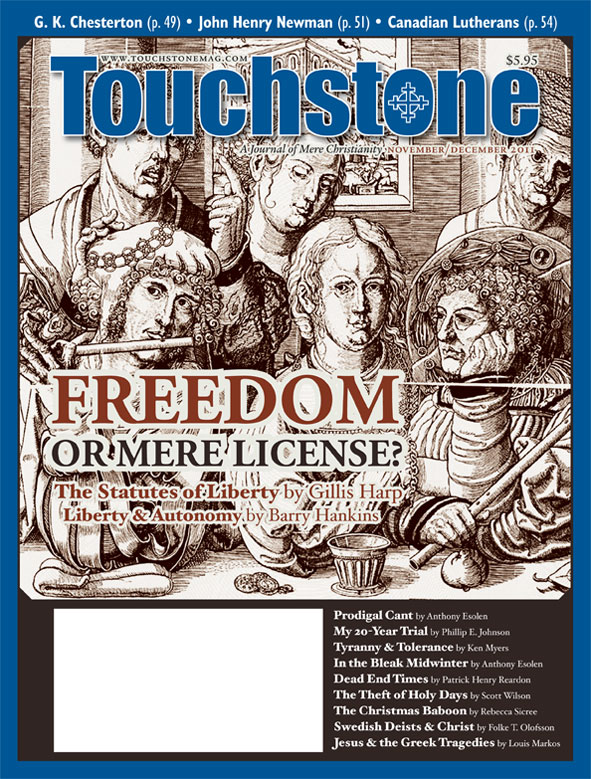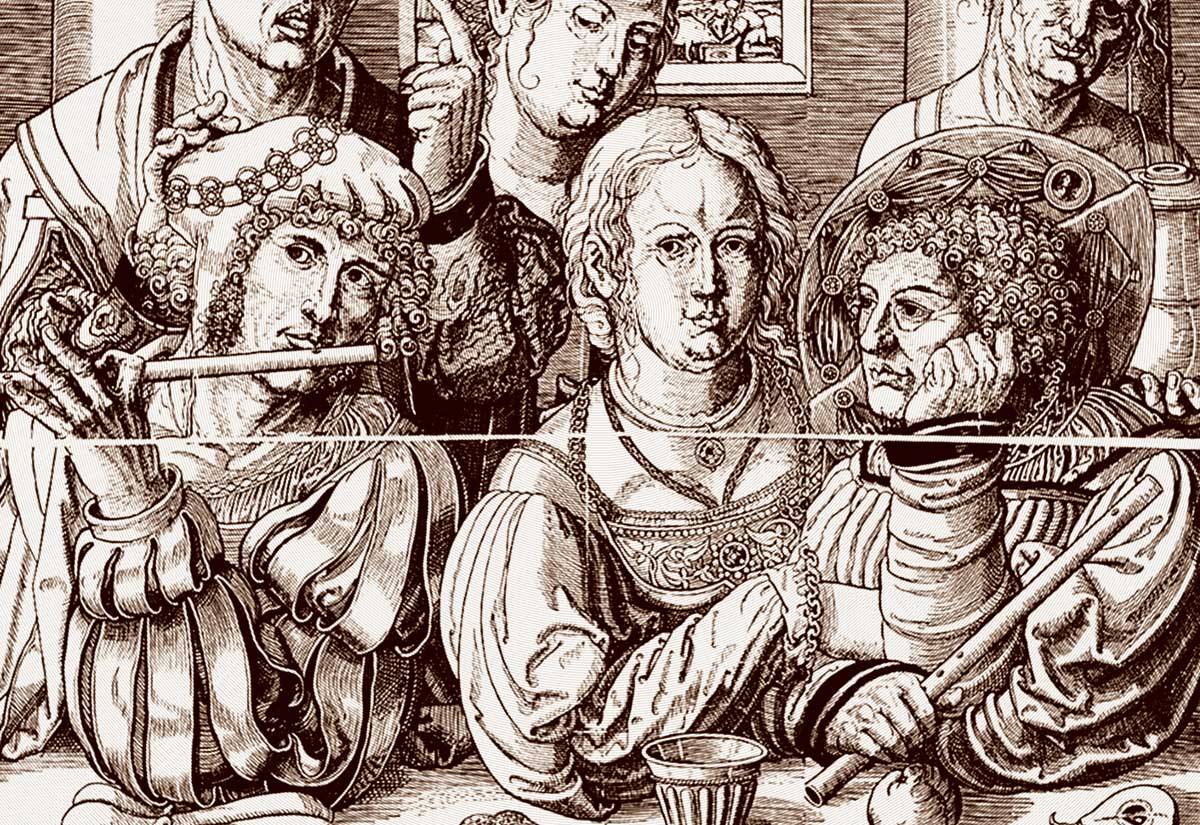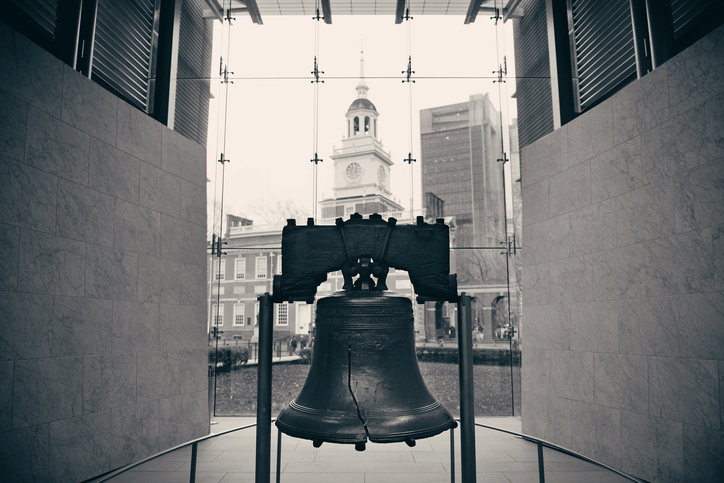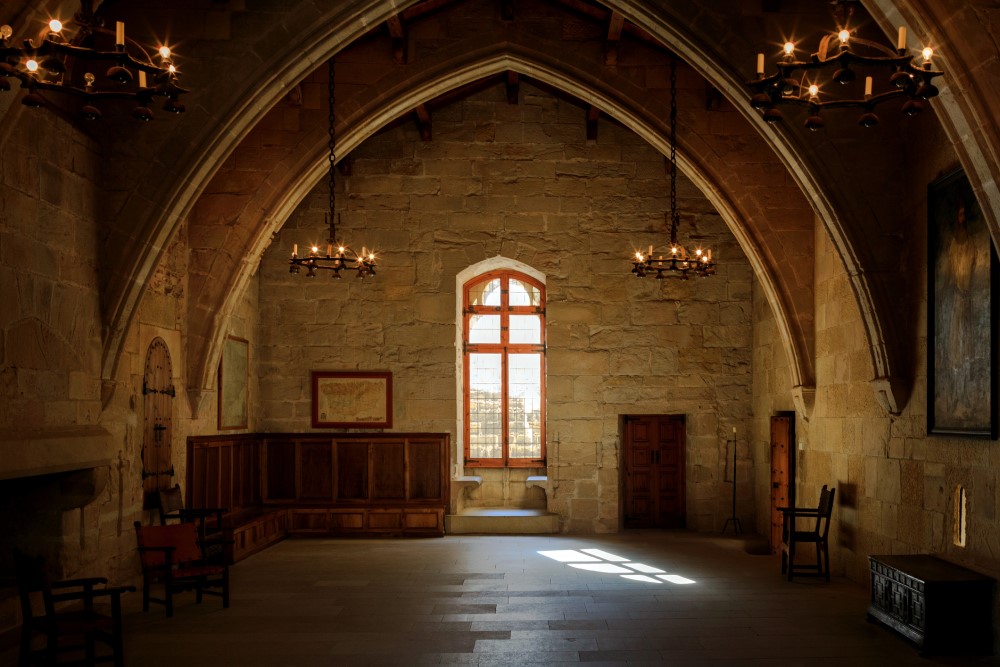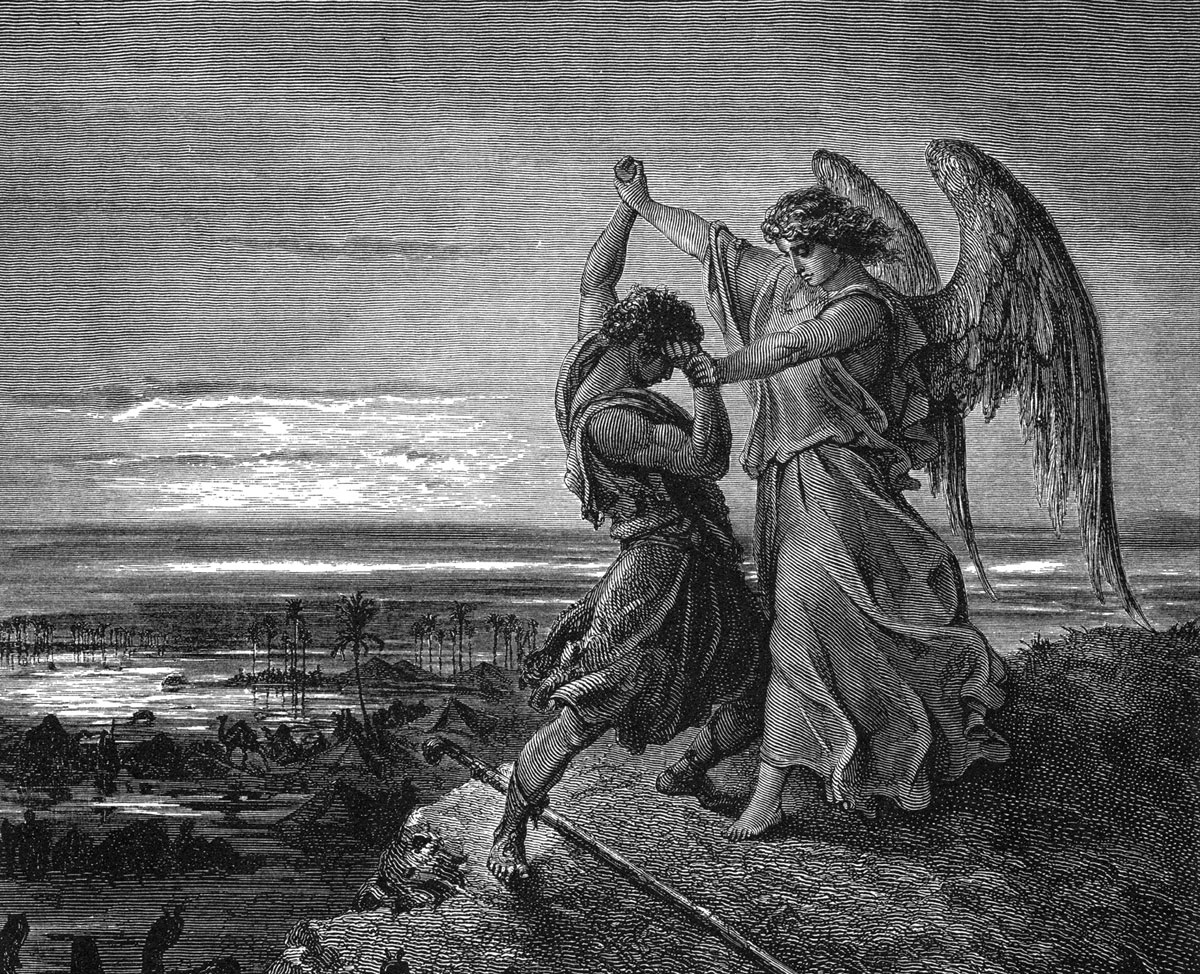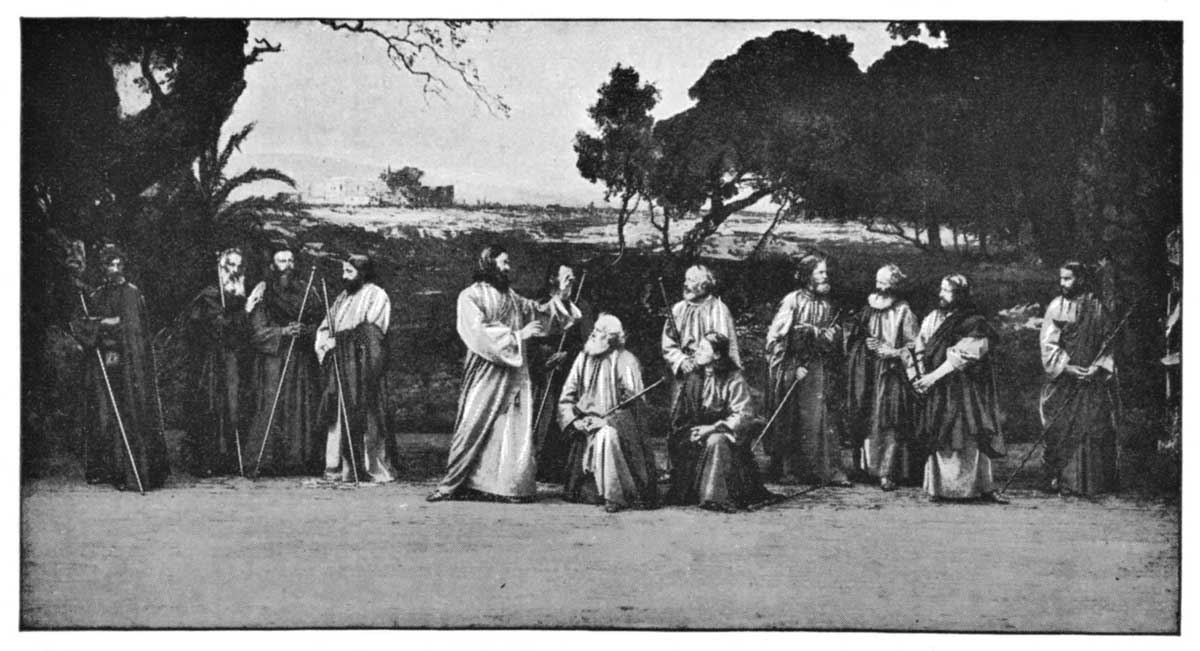Liberty, Conscience & Autonomy
How the Culture War of the Roaring Twenties Set the Stage for Today’s Catholic & Evangelical Alliance
by Barry Hankins
The election of 1928 was fascinating and contentious. For the first time a Catholic candidate ran for president on a major party ticket, and many believed the future of American freedom was at stake. As the Democratic candidate Al Smith campaigned across the country, an array of Protestants argued that a Catholic could not or should not be president of the United States. The anti-Smith rhetoric ranged from the reasonable to the outrageous. Texas fundamentalist preacher J. Frank Norris, for example, recalled for audiences the St. Bartholomew’s Day Massacre of 1572, where between 10,000 and 30,000 Protestants were killed by Catholics during the French Wars of Religion. The same thing would happen today, he said, if a Catholic were elected president. Two weeks before the election he exclaimed, “What a conglomeration. Tammany Hall, Roman Catholicism, bootleggers, carpet bag politicians and negros [sic].
What will the white people of Texas do?”
Much of the time cooler heads prevailed. Previously unknown attorney Charles C. Marshall penned a significant article for Atlantic Monthly titled “An Open Letter to the Honorable Alfred E. Smith,” in which he posed for the New York governor and soon-to-be presidential candidate reasonable questions about what a Catholic president’s relationship to the pope would mean. Smith was then given space in the same magazine to make his thoughtful reply. The debate was pitched yet dignified.
Tension Between Faith & Freedom
Lost in the rhetoric that year, and ignored ever since, was that the country had stumbled into a controversy that ran far deeper than anything actually discussed during the campaign. Looking back at the election today, we see in microcosm the central elements of the culture wars of our own time.
In the twenties, Protestants charged that Catholics could not hold full loyalty to the country because they had a prior political allegiance to the pope. The real question for Catholics, however, was not where they stood with regard to the state and the pope, but where they stood with regard to American freedom. As historian John McGreevy has argued in Catholicism and American Freedom, the issue for Catholics in America has always been the tension between their faith and the modern notion of freedom that is based on individual autonomy. Emanating from the eighteenth-century Enlightenment, autonomy affirms each individual’s freedom to make up his or her own mind about important matters, unencumbered by external authority. Today, we call this “freedom of choice.”
Nineteenth-century popes Pius IX and Leo XIII believed that religious liberty in America was based on autonomy, which meant it freed individuals from the authority of the Catholic Church. Hence, Pius proffered his infamous Syllabus of Errors in 1864, and Leo issued an important encyclical in 1885. These documents condemned a laundry list of modern “heresies,” among them liberal democracy (at least seemingly) and separation of church and state. Critics hounded Al Smith on the campaign trail, asking him repeatedly, “What do you have to say about the pope’s [Leo XIII] encyclical?” Smith at one point allegedly responded in exasperation, “Will someone please tell me what the hell an encyclical is?”
A generation later, Catholic theologian John Courtney Murray showed that individual autonomy was not the only way to conceive of religious liberty and separation of church and state. Murray interpreted the First Amendment to the U.S. Constitution as disallowing state supremacy over the consciences of individuals so they could properly obey the Church without interference from the state. In other words, Catholics could embrace the American idea of religious freedom without embracing individual autonomy.
Murray’s ideas became the basis for the Catholic Church’s 1965 Declaration on Religious Freedom. He helped write that Declaration, and it became the church’s official position at the Vatican II Council. The Declaration states forthrightly that “the human person has a right to religious freedom.” Al Smith could have used an authoritative statement such as that in 1928, but Protestants would not have believed it anyway.
Many in the sixties hailed the Declaration of 1965 as a shift away from the ideas of Pius and Leo, but at least one thing had not changed. The Catholic Church was still supreme, not in the sense of demanding that the American government acknowledge her officially, but in the sense that the state has a responsibility under God to protect religious liberty so that individuals can stay properly under the ultimate authority of the Church. This is not individual autonomy.
Two Views of Conscience
In 1928, John Courtney Murray and the Declaration on Religious Freedom were well off in the future. In the meantime, the week after the election, the editor of the liberal Protestant journal Christian Century, in an article titled “What Elected Hoover?” offered a remarkable analysis. Throughout the campaign the Century had consistently denounced “bigoted anti-Catholicism,” like that of Norris, and rejected out of hand the notion that a Catholic could not be president. At the same time, the journal framed the election as a contest between those who believed a conscience “formed under ecclesiastical authority” was better fit for office than a “conscience individually formed” and those who believed the opposite.
There was little doubt that the Christian Century editor preferred a conscience individually formed. Most Protestants at the time, whether fundamentalist or liberal, thought the difference between themselves and Catholics was that Protestants believed in consciences free from the sort of ecclesiastical authority that bound Catholics. To prefer candidates who believed in the conscience individually formed was not bigotry, the Christian Century editor wrote, “but the reasonable application of the voter’s religious convictions to his judgment of men.”
The conundrum that went unacknowledged by the Christian Century editor was apparent when he discussed Prohibition, the issue with which the election of 1928 was tightly bound. The Century editor said that only a few “wets” fought for freedom in order to build a better society. “[M]ore of them were fighting for a personal privilege regardless of public welfare,” the editor charged. The next year, this same journal denounced the individual freedom argument when the obscenity wars were raging in Boston. There, cultural liberals such as H. L. Mencken and lawyers for the ACLU espoused the right of authors to explore sexual intimacy in novels. In response, the Christian Century held that such an argument was insufficient if based on individual freedom of expression without proper concern for the corporate well being of society.
In other words, whether on Prohibition or the obscenity wars, individual freedom was not an end in and of itself, as cultural liberals believed. Rather, the proper end of politics was a good society, and a good society depended on a set of deeply held community values. The drys had them; the wets did not, the editor wrote. “The drys were fighting for a policy and a program which they conceived to have deep moral significance and to which they attached the sanctions of religion,” the editor continued. “Religious conviction attaching itself to a practical program for social betterment is both legitimate and indispensable.”
The irony is that having pitted a conscience “formed under ecclesiastical authority” against a conscience “individually formed,” the Christian Century editor preferred the latter. Yet, he still believed that free individuals could deliberate together to form a good society. He failed to consider the tension present in such an argument. Essentially, it is this: If consciences are to be individually formed, how can free individuals deliberate together to restrict the freedom of other individuals in order to produce a good society? Prohibition was certainly a restriction on the freedom of individuals. Under what authority could consciences “individually formed” possess the right to curb the freedom of other consciences “individually formed”? It would seem that such consciences would need to recognize an authority to which all individuals were responsible, an authority that says what constitutes a good society, in which case those consciences would be formed by that authority and would therefore not be “individually formed.”
Assumed Moral Consensus
This brings us to one of the great ironies of the election of 1928. Neither liberal nor fundamentalist Protestants could appreciate the tension between American freedom and religious authority that thoughtful Catholics experienced. As a liberal Protestant, the Christian Century editor, and those the journal represented, had adjusted theology according to modern modes of thought, and one of those was the modern notion of freedom based on individual autonomy, a conscience individually formed.
Yet liberal Protestants still believed that reasonable individuals could deliberate together around common values to produce a good society. They did not foresee a time later in the century when individual autonomy would be reduced to the maxim that one can do whatever he wants so long as it does not hurt another’s freedom. By the late twentieth century, American freedom meant that individual autonomy trumped efforts to build a good society, or even to decide what a good society would look like. The idea of the good must be left to individuals to decide for themselves. If there happened to be a clash between an individual’s rights and the group’s effort to build a good society, individual rights prevailed.
Accustomed as they were to a broad moral consensus that had existed throughout American history, liberal Protestants in the twenties could not have envisioned deep moral disagreement. Nor could they have envisioned that freedom alone, especially when it is based on individual autonomy, was an insufficient basis for a good society. In the 1920s, liberal Protestants never quite understood that Catholic immigrants who were serious about their faith loved America because it gave them greater freedom to submit themselves to the Church—i.e., to be good Catholics—and not because in America they got to make up their own minds about what was right and wrong.
But we don’t want to let the cultural liberals off the hook either. Whereas the Protestant liberals assumed that consciences individually formed would somehow, as if by magic, always deliberate fruitfully over what constituted a good society, in the obscenity wars the cultural liberals defended the individual right of self-expression because they assumed such freedom would always be uplifting for humanity. They defended the literary exploration of human sexuality because they valued human beings in all their complexity. When exploration of human sexuality gave way to exploitation of sex in the form of hard-core pornography that degraded and victimized women and children, it was tough to make an argument based on freedom that there should be limits on pornography.
Fundamentalists may have seen the dilemma a bit more clearly than liberal Protestants, when fundamentalists were not acting according to anti-Catholic and anti-liberal prejudice, which was not very often. They and their more moderate Evangelical heirs cannot accept individual autonomy any more than Catholics can, because fundamentalists and Evangelicals believe that some things have been settled by the Bible, and the Bible trumps both individual freedom and individual experience. Living under the last vestiges of a quasi-Protestant establishment, however, it was inconceivable to fundamentalists in the twenties that biblical authority and American freedom could ever be at odds.
The Underlying Issue of Authority
By the end of the twentieth century this had all changed. Once the issue was no longer Prohibition but abortion, Evangelical Protestants and traditional Catholics recognized their common ground. Evangelicals could now see as clearly as Catholics that religious authority was at odds with individual autonomy as it is manifested in the freedom to choose an abortion. Abortion became the clearest example of the clash between the individual’s autonomous right to choose and religious authority that said the fetus is human and has a right to life. Moreover, Evangelicals argued publicly in the 1980s that the state is under the authority of God, roughly the same thing Catholics had been saying.
In 1994, therefore, Evangelicals and Catholics Together (ECT) was launched as a venue for dialogue on theological and cultural issues. The clarity over Catholic-Evangelical common ground developed as the cultural liberalism of the obscenity wars of the twenties became the dominant political force in America and emphasized more forcefully than ever that American freedom is based on individual autonomy. This cultural liberalism is today known as “political liberalism,” and its chief proponent in the twentieth century was Harvard political theorist John Rawls.
The constitutional right to choose an abortion made clear to Evangelicals that there were limits to their allegiance to the sort of freedom espoused by political liberalism, something traditional Catholics had always known at least intuitively. Evangelicals and Catholics now understand more than ever before that they are under a religious authority that has settled deeply moral issues such as abortion, or for that matter “gay marriage.” The decision to have an abortion or to live a homosexual lifestyle, therefore, cannot be left to the individual acting autonomously.
Liberal Protestants, on the other hand, both in the twenties and today, are more apt to make peace with political liberalism and individual autonomy because, for them, personal religious experience stands as their central authority. In the denominational battles known as the fundamentalist-modernist controversy, liberal Protestants made religious experience their abiding authority, while fundamentalists continued to argue for the authority of the Bible. After the fundamentalist-modernist controversy, and the Scopes trial of 1925, liberals and fundamentalists became uneasy allies for the rest of the decade against the cultural and political liberals who led the secular revolution that was underway in the obscenity wars. But while the stated issues that divided fundamentalist and liberal Protestants in the first half of the decade were particular points of doctrine, views of the Bible, and whether or not to accept evolution, the underlying issue was always authority. Fundamentalists recognized the Bible; liberal Protestants looked to religious experience.
On the issue of authority, by the late twenties, fundamentalists were closer to Catholics than they were to liberal Protestants; they just didn’t know it yet. Both groups acknowledged an external authority that trumped religious experience and individual freedom. By contrast, liberal Protestants, touting “consciences individually formed,” were closer to the cultural liberals they fought against in the obscenity wars. Protestant anti-Catholicism, however, thwarted a new alignment that would have pitted Catholics and fundamentalists on one side against liberal Protestants and cultural liberals on the other.
Temporary Alliance
The culture war over authority and individual autonomy of the Roaring Twenties calmed down considerably sometime during the 1930s, only to be revived in slightly altered form in the last quarter of the twentieth century. During the middle third of the century, Americans rallied together to defend liberal freedom, however understood, first against the onslaught of Nazi aggression during World War II, then against Soviet Communism in the Cold War, two movements that sought nothing less than the destruction of the liberal ideal of freedom based on individual autonomy.
It was not yet apparent that Evangelicals and traditional Catholics had very different views about individual freedom than did Protestant liberals and cultural liberals. While fighting fascists and Communists, all groups simply assumed they meant the same thing when they used the word freedom. The fact that Communism sought to eliminate the Christian faith as well as the liberal view of freedom also helped hold fundamentalists in the Cold War alliance with liberal Protestants. Catholics, Protestants of both liberal and fundamentalist stripes, and secular liberals could all agree that Communism threatened everything held dear by Americans—both liberal freedom and the Christian faith. Historian Richard Hofstadter once remarked that a single generation of post-WWII consensus caused Americans to forget decades of turmoil.
To the extent that there were culture wars fueled by religion between 1930 and the 1970s, they tended to run along Protestant-Catholic lines, with religious liberty the issue. In 1949 Paul Blanshard authored a popular book entitled American Freedom and Catholic Power, which trotted out at length the kinds of issues Charles Marshall had covered in his Open Letter to Al Smith in 1927. Just before Blanshard’s book appeared, clergy and scholars founded an organization dedicated to religious liberty and church-state separation called Protestants and Other Americans United for Separation of Church and State (POAU). Coming almost twenty years before the Catholic Church’s Declaration on Religious Freedom, the very name of this organization suggested that Catholics might not be fully American. POAU found its members among secular liberals, Jews, liberal Protestants, and some Southern Baptist leaders who had never seen a form of separation of church and state they did not like.
As anti-Catholicism became a bigoted taboo, Protestants and Other Americans became simply Americans United for Separation of Church and State. In the meantime, Catholics distinguished themselves as fully American by solidly opposing Communism during the Cold War and getting one of their own, John F. Kennedy, elected president.
Religion as a Private Matter
But in order to be elected in 1960, Kennedy had to go to Houston, Texas, the so-called buckle of the Bible Belt, and tell Protestants, “I believe in a President whose views on religion are his own private affair.” Kennedy’s statement was more sweeping than Al Smith’s claim in 1928: “I should be a poor American and a poor Catholic alike if I injected religious discussion into a political campaign.” In his response to Charles Marshall, Smith argued that there was no conflict between his faith and his political duties, that different religions should tolerate each other, that all religions were equal before the law, that individuals had the right of conscience, and that there should be complete separation of church and state. But he never claimed that religion was merely a private affair. Rather, he extolled the virtues of religion in public life and said America needed more of it, especially among the youth. By Kennedy’s day, the dominant position was that separation of church and state was premised on the notion that religion was a private matter, just as freedom was premised on the autonomy of the individual.
The private nature of religion and the autonomy of the individual are the twin pillars of what I have been calling cultural liberalism or political liberalism. Its influence was just beginning in the twenties but would be dominant in some quarters by the time Kennedy ran for president in 1960. By contrast to the idea that religion was private, Smith went so far as to say, “The law of the land is built upon the Commandments of God,” something Christian Right activists argued with vigor after their emergence on the political scene in 1980. Smith may have believed it unseemly or bad manners to inject religion into a political campaign, and he knew that what drove Protestants to do so was often intolerance of Catholics. But he never claimed that America had a secular state or that religion was a private matter.
This is not to say that no one in the twenties viewed religion as merely private. Clearly, the decade’s first president, Warren Harding, did. While an active participant at First Baptist in Marion, Ohio, he seems rarely to have thought about religion when he was not actually at church, and perhaps not even then. Religion not only was private for him, it was not even very important, but he was never pressured to make such a claim as he campaigned for the presidency, as Kennedy was in 1960. It would have sounded odd and even ominous had Harding done so.
There were also those such as attorney Dudley Field Malone, who said explicitly in the Scopes trial that folks should keep their Bibles “in the world of your own conscience, in the world of your individual judgment,” but Malone was part of the culturally liberal minority, arguing a position he hoped might someday dominate the public landscape. Privatized religion had not yet become the dominant view. This would change over the course of the next three decades, the same decades that saw the autonomy of the individual become the dominant definition of American freedom.
According to George Marsden in Religion and American Culture, the threat of fascism during World War II, and then of Communism during the early Cold War, allowed Americans of different religious persuasions to harbor the fiction that they all meant the same thing when they used the word freedom. Later, however, without a bogeyman to hold the liberal-Protestant/secular coalition together, the old fault lines of the twenties resurfaced—but with a twist. Liberal Protestants switched sides, joining the ranks of the secular cultural liberals in affirming the autonomy of the individual, or what the 1928 Christian Century editor called “the conscience individually formed.”
Liberal Catholics joined them, affirming with John F. Kennedy that religion is a private matter. As former New York governor Mario Cuomo told a 1984 Notre Dame audience, “The values derived from religious belief will not—and should not—be accepted as part of the public morality unless they are shared by the pluralistic community at large, by consensus.” What this means for Cuomo and other liberal Catholic politicians is that while they privately follow the teachings of the Catholic Church in opposing abortion, publicly they are pro-choice because each autonomous individual must decide for herself whether or not to have an abortion. In other words, while privately Catholic, publicly they follow the line of cultural or political liberalism. Like the Christian Century editor of 1928, Cuomo held out the hope that we could arrive at a consensus about what constitutes a good society, but thus far no one on either side of today’s culture wars has figured out how autonomous individuals can do that.
Public Once Again
Evangelicals also switched sides in the recent culture wars. Having argued in 1928 that they, like their liberal Protestant allies, supported individual freedom against ecclesiastical authority, in the eighties Evangelicals joined conservative Catholics in acknowledging that religious authority (the Bible, the Church, or both) stands above the individual conscience. The combatants in America’s culture wars have realigned, and the Protestant-Catholic divide that seemed so central in the twenties has dropped out of sight. New cultural issues have emerged—abortion and homosexuality to name two—while others from the twenties are still with us. Among the latter are the relationship of science and religion (à la the Scopes trial), the nature of obscenity, and the intramural squabbling between liberal and Evangelical/fundamentalist Protestants.
The underlying issue in America’s culture wars has not changed, however. Differing definitions of human freedom were central in the Roaring Twenties, and they still are today. As to the question of whether religion is a private matter, the quarter-century after 1980 saw a return to the dominant view of the twenties. Religion is, once again, very public.
In 1980 three presidential candidates—Democrat Jimmy Carter, Republican Ronald Reagan, and independent John Anderson—all claimed publicly that they were born-again Christians. Cultural liberals howled that religion was a private matter and that these candidates should keep their religious preferences out of the campaign. Critics might well have said that these candidates were taking us back to the twenties. From 1980 until 2000, the status of religion in presidential campaigns was contested, with some candidates baring their religious souls, while others, not so much.
In 2000, there were again three very publicly religious candidates in the presidential campaign—Republican George W. Bush, Democrat Al Gore, and Democratic vice presidential candidate Joseph Lieberman. As is well known now, Bush is a self-professed born again Evangelical, Gore an active Southern Baptist, and Lieberman an Orthodox Jew. It seemed as if the three were holding a contest to see who could most clearly articulate how religious views should shape public policy.
In 2004, Democratic presidential candidate John F. Kerry realized too late in his campaign that Kennedy’s cultural-liberal line about private religion would not do. A Roman Catholic privately, he was nevertheless unaccustomed to talking about religion in public, quite possibly because he hailed from a section of the country where cultural liberalism was still dominant. Roundly denounced by bishops in his own church for his pro-choice stance on abortion, he tried late and feebly to articulate how religion played a role in his public life. This illustrates how much things had changed from 1960, when Kennedy ran. The first JFK needed to tell Americans how religion would not influence his politics; the second had to say how it would.
As Kerry’s experience shows, after 2000, religious full disclosure was no longer optional. In 2008, candidates John McCain and Barack Obama talked openly about religion. They had to; it was now required of presidential candidates. Before they ever met face-to-face in debate, they both traveled to Saddleback Church, the Evangelical mega-church in California, where they participated in nationally televised interviews with Evangelical pastor Rick Warren.
Meanwhile, both candidates had preacher problems. Obama had to answer for his pastor Jeremiah Wright’s odd, controversial, and seemingly racist views, while McCain had to distance himself from the fundamentalist endorsement of the Reverend John Hagee. A self-proclaimed Christian Zionist and end-times prophecy expert, Hagee seemed to imply that God engineered the Holocaust to facilitate the creation of modern Israel.
Earlier, during the Republican primaries, Mitt Romney traveled to Texas and reprised Kennedy’s speech from 1960. This was because Evangelicals in the Christian Right were as worried about Romney’s Mormonism as they had been about Kennedy’s Catholicism. Rather than arguing that religion was merely a private affair as Kennedy had done, however, Romney said that the morality of his religion, the part that would influence his presidency, was the same morality touted by Evangelicals and traditional Catholics. He was, in other words, publicly religious but only privately Mormon. In this respect he sounded more like Al Smith than John F. Kennedy.
Battles Still with Us
While Evangelicals join traditional Catholics in applauding the forthrightness of candidates’ public expressions of religion, cultural or political liberals continue to argue that religion is a private matter that should be left in the realm of autonomous individuals. Most of the liberal arguments are made in the halls of academia through scholarly articles that appear in journals that the wider public never reads. The idea that religion is private and should be kept out of politics has lost the popular favor it enjoyed in the sixties and seventies (and the idea may have been a fiction even then).
As was the case in the twenties, the liberal insistence that religion remain private is once again the minority report. At the popular level, liberal pundits may tell us why a particular person’s religious views would not be helpful in public life, but such pundits know they will get nowhere with the blanket claim that religion is a private matter. Kennedy’s position from 1960 satisfies few today, and polls show that a majority of the American people want their president to be a person of deep religious faith. The view of religion seems to have gone from public in the twenties, to private at mid-century, then back to public after 1980.
The related issue of freedom has seen a similar but not identical flip-flop. Freedom as individual autonomy was the minority view in the twenties, advocated by cultural liberals against a waning communitarian establishment made up of both liberal and fundamentalist Protestants. Today, the reverse is true, as autonomy is the publicly dominant view of freedom, with communitarians of Evangelical and traditional Catholic stripes holding forth a hearty critique.
No one has yet solved the conundrum characterized by the Christian Century editor of 1928 as a contest between a “conscience individually formed” and a “conscience formed under ecclesiastical [or biblical] authority.” For better or worse, the culture-war battles over the place of religion in public and the nature of American freedom are with us no less today than in the Roaring Twenties. •
This article is adapted from the last chapter of his book Jesus and Gin: Evangelicalism, the Roaring Twenties and Today's Culture Wars (Palgrave Macmillan, 2010).
Barry Hankins is Professor of History at Baylor University in Waco, Texas.
subscription options
Order
Print/Online Subscription

Get six issues (one year) of Touchstone PLUS full online access including pdf downloads for only $39.95. That's only $3.34 per month!
Order
Online Only
Subscription

Get a one-year full-access subscription to the Touchstone online archives for only $19.95. That's only $1.66 per month!
bulk subscriptions
Order Touchstone subscriptions in bulk and save $10 per sub! Each subscription includes 6 issues of Touchstone plus full online access to touchstonemag.com—including archives, videos, and pdf downloads of recent issues for only $29.95 each! Great for churches or study groups.
Transactions will be processed on a secure server.
more on religious liberty from the online archives
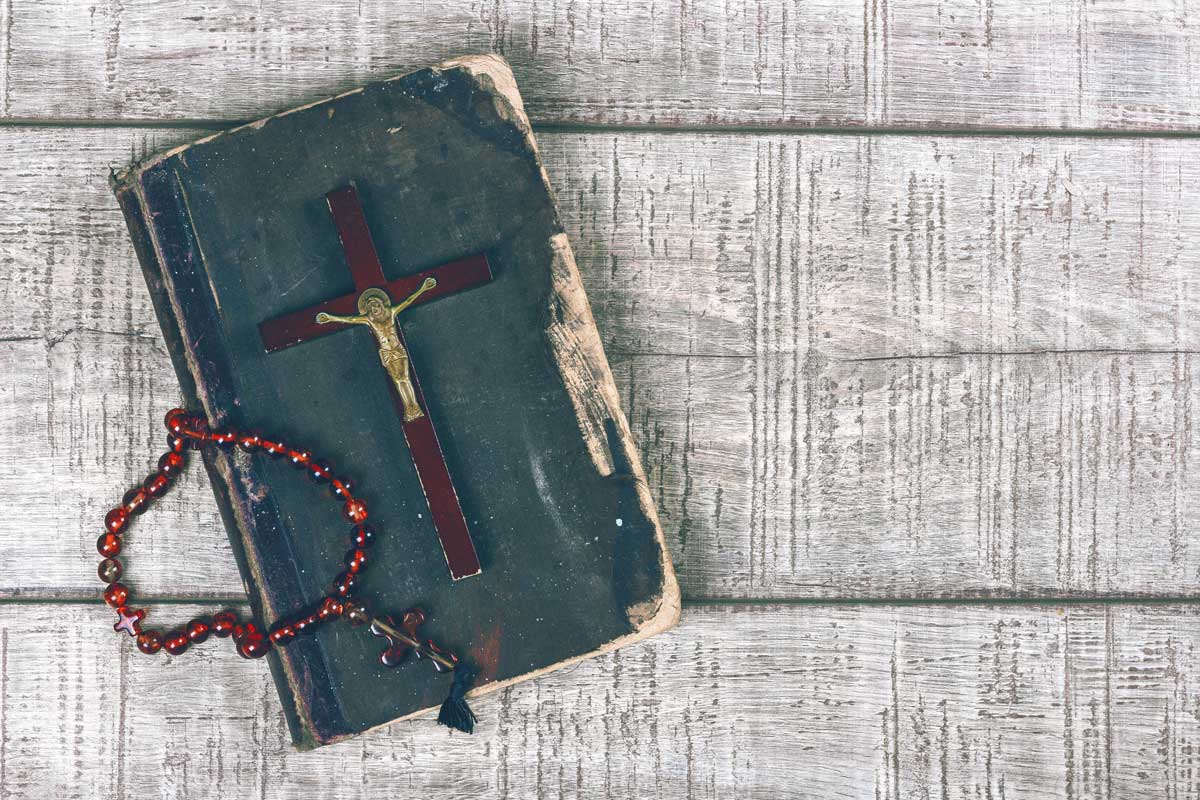
24.6—Nov/Dec 2011
Liberty, Conscience & Autonomy
How the Culture War of the Roaring Twenties Set the Stage for Today’s Catholic & Evangelical Alliance by Barry Hankins
more from the online archives
calling all readers
Please Donate
"There are magazines worth reading but few worth saving . . . Touchstone is just such a magazine."
—Alice von Hildebrand
"Here we do not concede one square millimeter of territory to falsehood, folly, contemporary sentimentality, or fashion. We speak the truth, and let God be our judge. . . . Touchstone is the one committedly Christian conservative journal."
—Anthony Esolen, Touchstone senior editor





